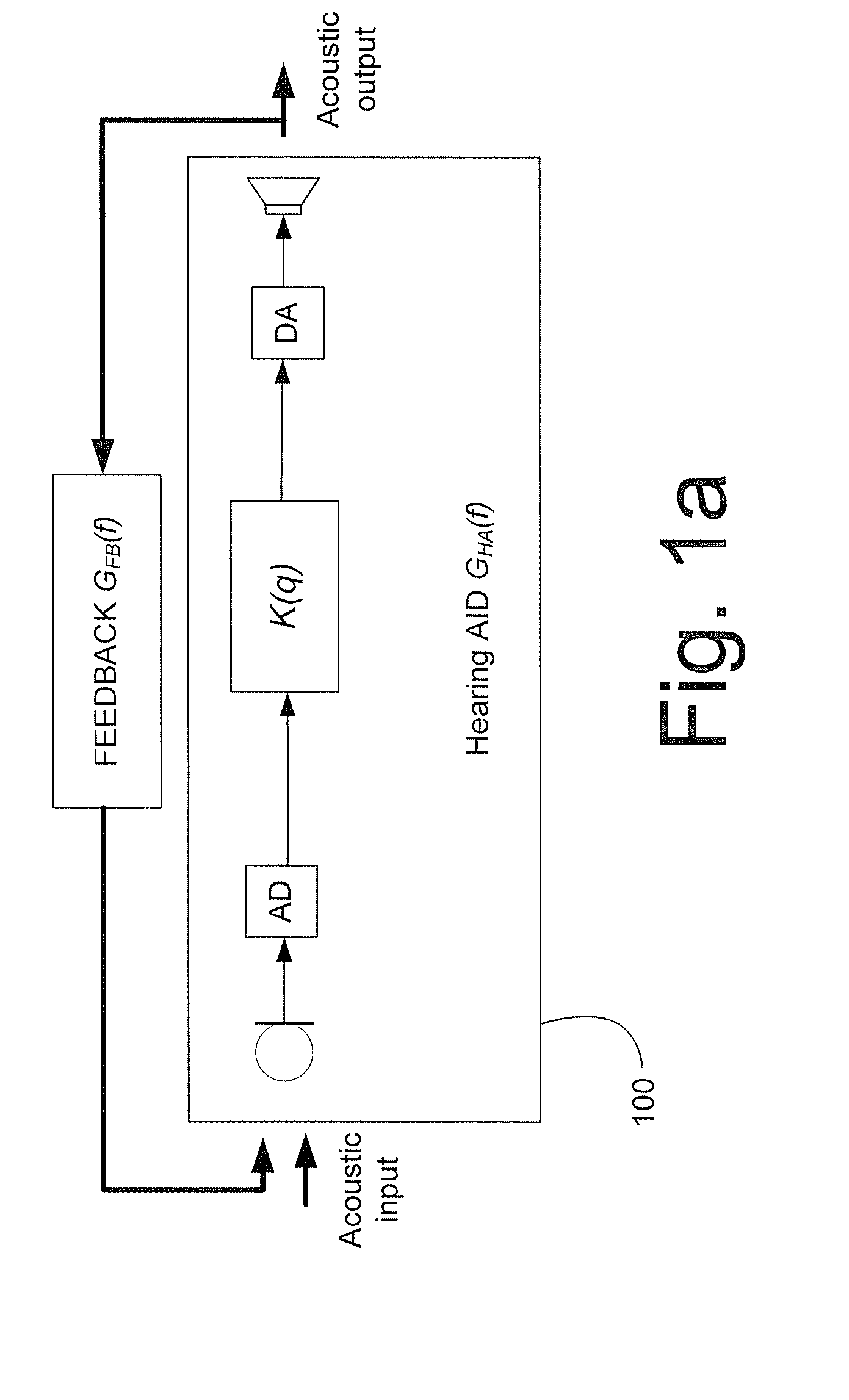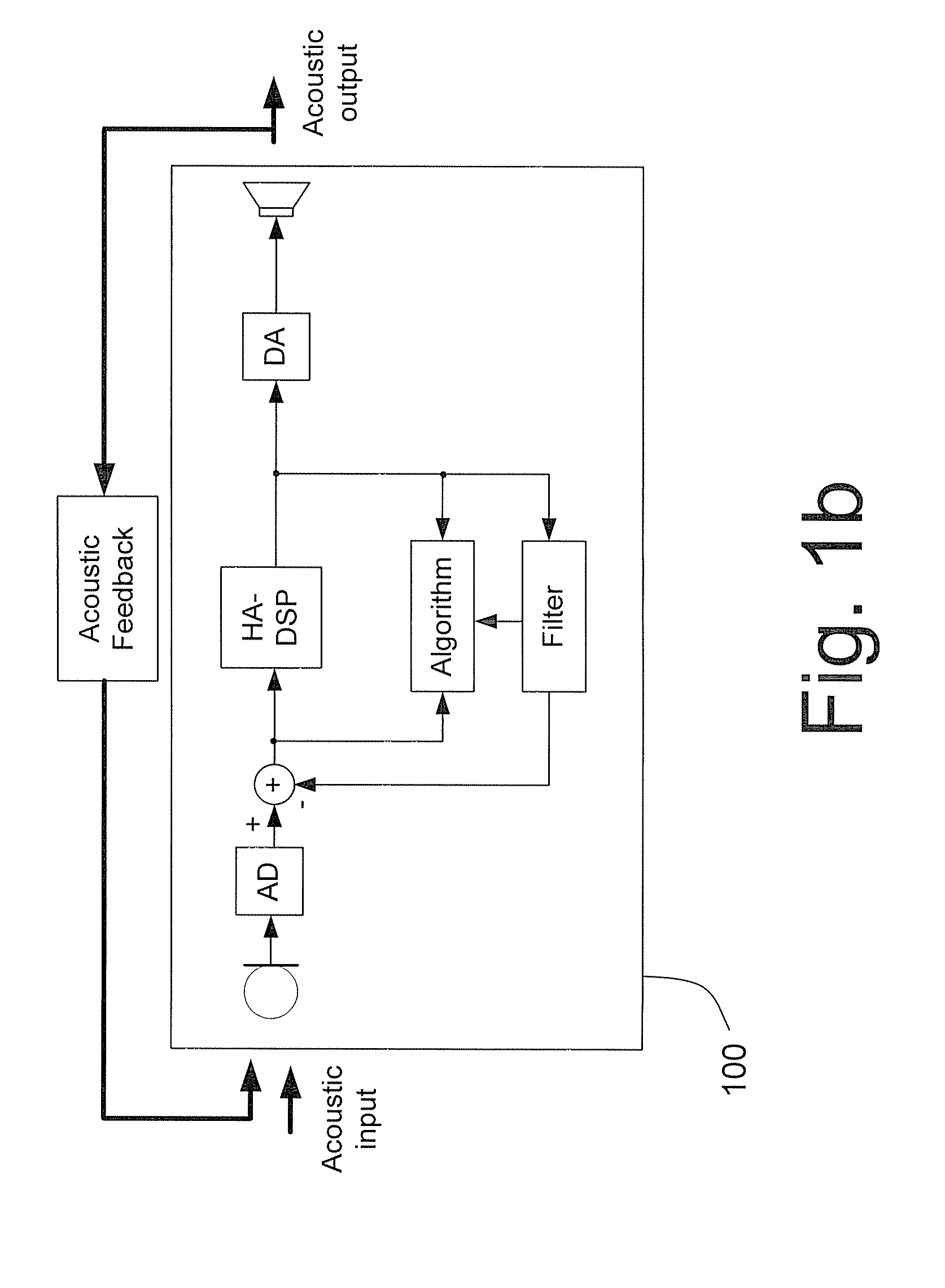Hearing aid adapted to a specific type of voice in an acoustical environment, a method and use
a technology of acoustic environment and hearing aid, applied in the field of hearing aids, can solve the problems of many hearing impaired people having difficulty understanding different voices, children can be especially difficult to understand, and people with a hearing aid device may have difficulty in understanding different types of voices, so as to improve the listeners perception of input sound, the effect of less noticeable and shorter tim
- Summary
- Abstract
- Description
- Claims
- Application Information
AI Technical Summary
Benefits of technology
Problems solved by technology
Method used
Image
Examples
example 1
[0094]Vowel formant patterns for a female for different vowels:
WordbeatfatherbootVowel / i / / α / / u / F1 310 Hz 850 Hz370 HzF22790 Hz1220 Hz950 Hz
example 2
[0095]Vowel formant differences for the vowel / u / as in “boot”:
Formant frequenciesFor a maleFor a femaleF1300 Hz370 HzF2870 Hz950 HzF32240 Hz 2670 Hz
[0096]FIG. 5 shows a partial block diagram of a hearing aid according to an embodiment of the disclosure illustrating the voice detector (VD) and frequency analyzer (FA) providing inputs to a decision unit (DEC), which—based on the inputs from the VD- and FA-units—decides which set of parameters to load into the digital signal processor (DSP) and when (if at all).
[0097]FIG. 5 illustrates the main parts of the forward path of a hearing aid according to an embodiment of the disclosure. The forward path comprises a microphone (MIC in FIG. 5) for receiving an acoustic input from the environment and converting it to an analogue electrical input signal, an AD-converter for converting the analogue electrical input signal to a digitized electrical input signal, a processing part DSP for adapting a digitized electrical input signal to the needs...
example 3
[0102]A procedure for automatically adapting a hearing aid program to a particular type of voice is outlined in the following:
[0103]1. Detect whether or not a voice is present. If no voice is present, load a predefined silence program (or do nothing). If a voice is present:
[0104]2. Detect a fundamental frequency F0 or a 1st formant frequency F1 of the voice or voices present.
[0105]3. In case that more than one voice is present, determine the dominant voice, e.g. by determining the voice having the largest sound pressure level of the fundamental frequency F0 (or formant frequencies Fi).
[0106]4. Select or determine a gain profile (or a set of parameters) from a predefined set of gain profiles (or sets of parameters) according to the detected fundamental frequency F0 or a 1st formant frequency F1 of the dominant voice.
[0107]5. Check if the determined gain profile (or set of parameters) is different from the currently used.
[0108]6. If yes, load the determined gain profile (or set of par...
PUM
 Login to View More
Login to View More Abstract
Description
Claims
Application Information
 Login to View More
Login to View More - R&D
- Intellectual Property
- Life Sciences
- Materials
- Tech Scout
- Unparalleled Data Quality
- Higher Quality Content
- 60% Fewer Hallucinations
Browse by: Latest US Patents, China's latest patents, Technical Efficacy Thesaurus, Application Domain, Technology Topic, Popular Technical Reports.
© 2025 PatSnap. All rights reserved.Legal|Privacy policy|Modern Slavery Act Transparency Statement|Sitemap|About US| Contact US: help@patsnap.com



